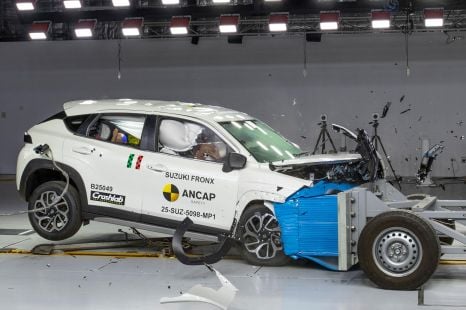

Damion Smy
Suzuki Fronx scores one-star ANCAP rating after seatbelt failure
6 Hours Ago
The Volkswagen Group is investing in electric vehicles more than many other car manufacturers, and the MEB platform plays a key role in this EV strategy.

Contributor
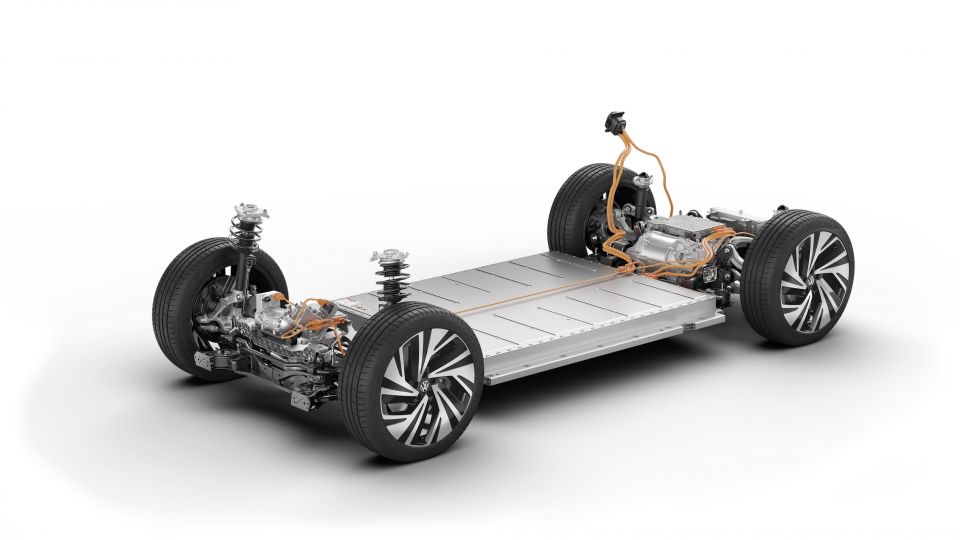

Contributor
One acronym is absolutely critical to the Volkswagen Group’s short- to medium-term electric vehicle strategy: MEB.
German for Modularer E-Antriebs Baukasten (translating to modular electric drive matrix), MEB is to electric cars what MQB was to the Group’s combustion engine cars, namely, a single platform that’s suitable for small to medium-sized vehicles.
MEB is crucial for Volkswagen as the company’s first mass-produced, dedicated platform for electric vehicles. It forms part of a massive €89 billion (A$137bn) investment in future technology until 2026, including funds for EV development, associated digitalisation technologies, tooling and production, and mobility services.
Indeed, in 2018, Volkswagen senior executive Thomas Ulbrich noted that “MEB is arguably the most important project in the history of Volkswagen, similar to the transition from the Beetle to the Golf.”
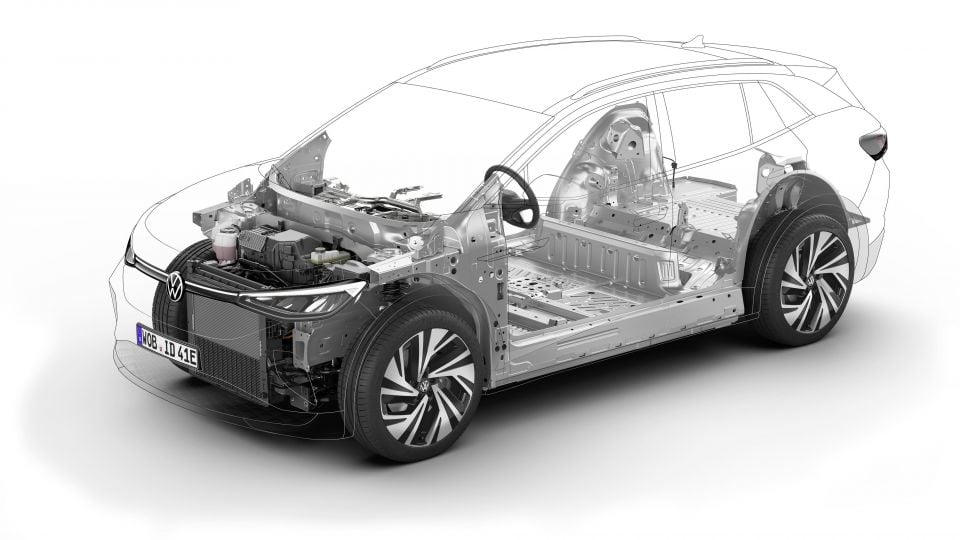
Unlike previous electric cars produced by the Volkswagen Group, such as the VW e-Golf (which was based on the MQB platform and adapted to fit a battery and electric motor), MEB can only support full battery-electric vehicles, such that models based on the MEB platform must be designed from the outset as an electric car.
Perhaps the most impressive aspect of the MEB architecture is its flexibility. The MEB chassis allows for the wheelbase and track widths to be elongated or shortened, making the platform suitable for everything from small cars to mid-sized sedans, SUVs and vans.
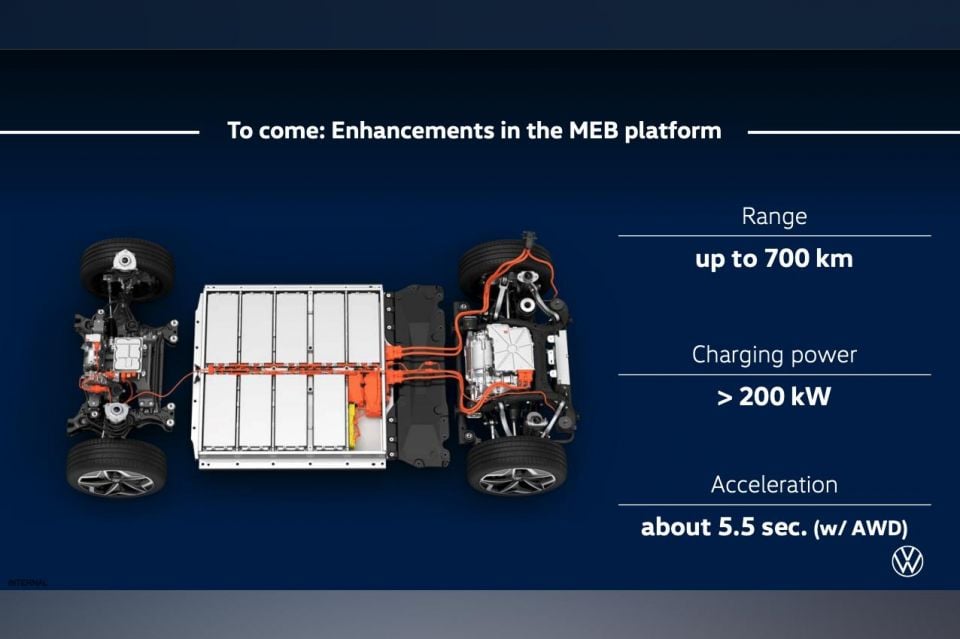
Despite the variability in chassis dimensions, tooling and production costs for MEB-based vehicles are brought down through economies of scale in sharing drivetrain components, batteries and other systems such as infotainment and the vehicle’s electrical architecture.
All MEB-based models feature either single-motor rear-wheel drive or dual-motor all-wheel drive.
Volkswagen claims that recent improvements to battery cell chemistry for upcoming MEB vehicles means that the platform can now be used to build vehicles with more than 700 km of range, DC fast charging greater than 200kW, and maximum acceleration from 0-100 km/h of less than 5.5 seconds.
MORE: Volkswagen plans 700km range, 200kW charging for MEB cars
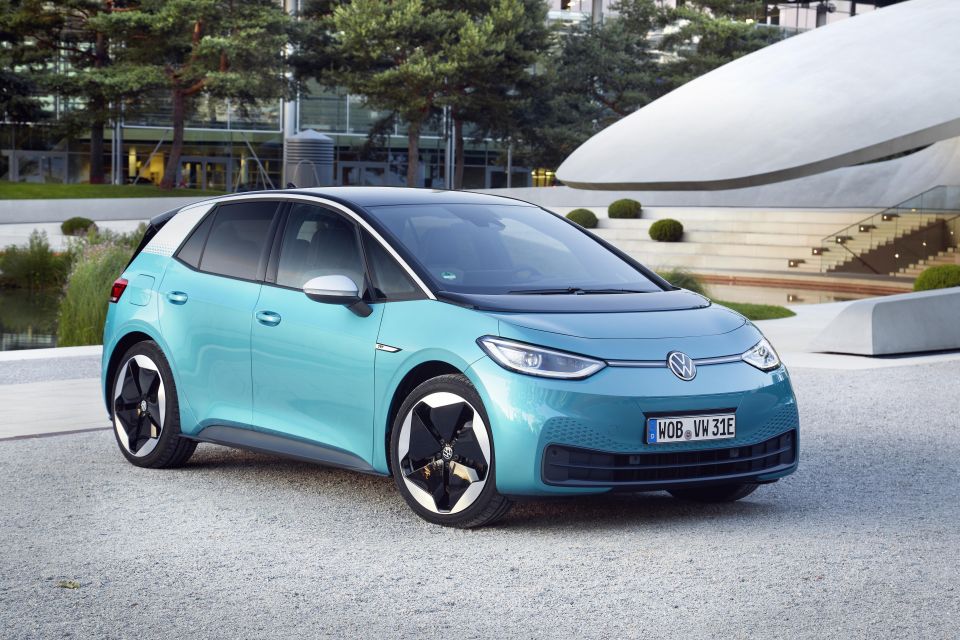
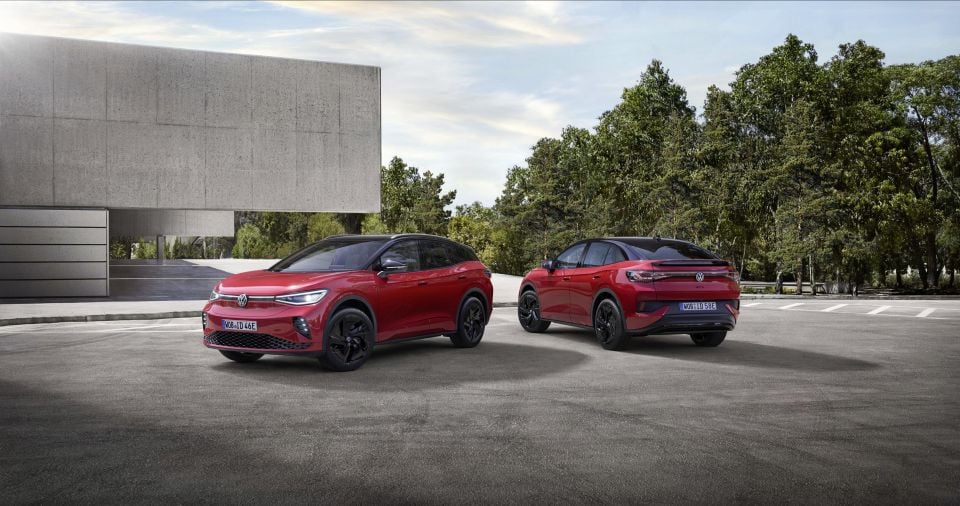
This is an improvement from original estimates that MEB vehicles could offer a range of more than 550 km with DC fast charging at up to 125kW.
Carmakers often outsource development of their infotainment systems to third-party suppliers. However, as part of its investments in digitalisation, the Volkswagen Group formed an independent division known as CARIAD in 2020 to bring software development for all VW Group brands in-house.
MEB marks the debut of CARIAD’s first in-house infotainment system, known as E3 v1.1, and brings a new user interface as well as features such as over-the-air software updates.
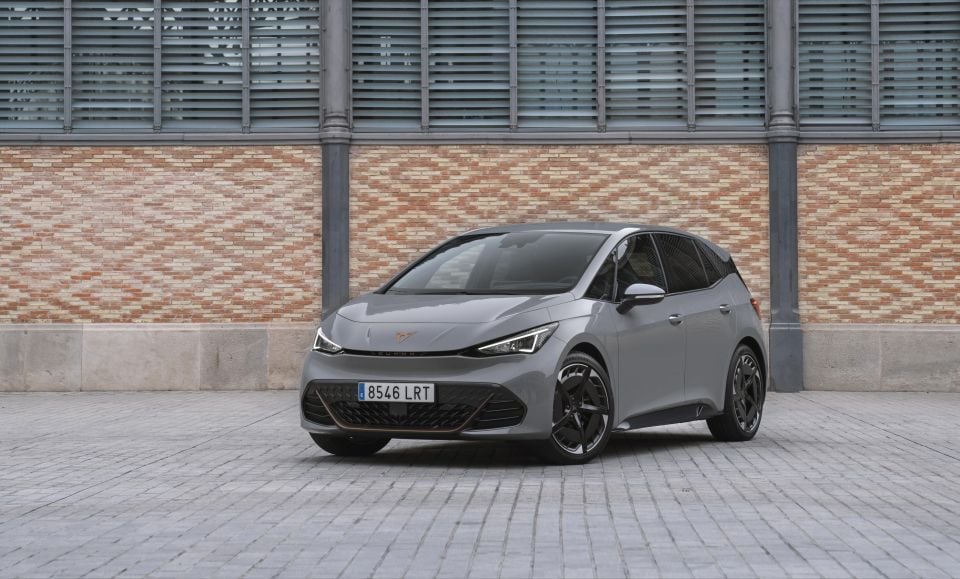
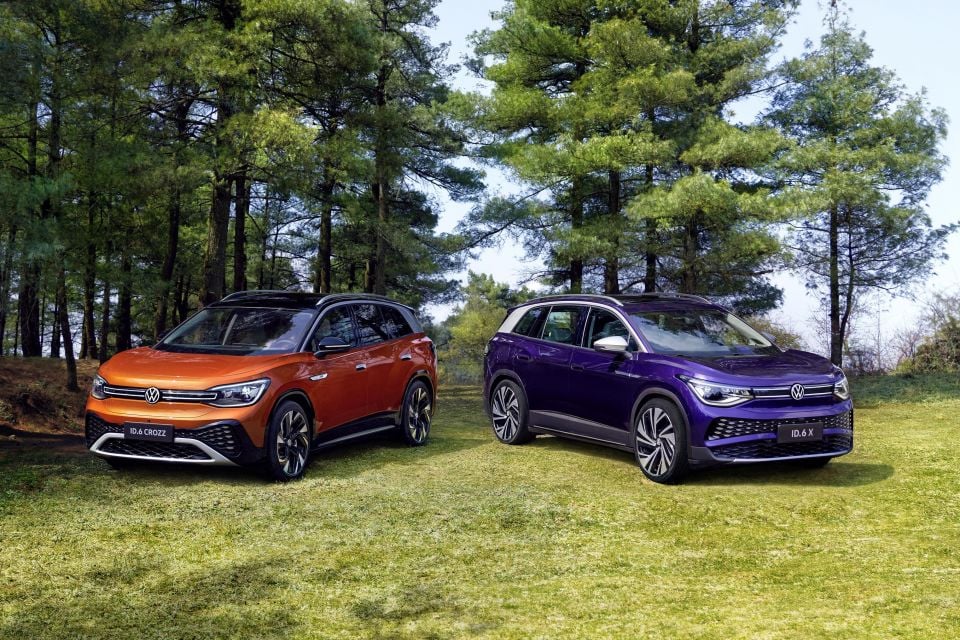
There are currently no MEB-based vehicles on sale in Australia. However, the Cupra Born is likely to be the first car based on the MEB platform on sale locally when it arrives during the first quarter of 2023.
Globally, a range of MEB-based vehicles are available, some of which may also come to Australia in the future.
Arguably the most significant is the Volkswagen brand’s ID. range of cars, including the ID. 3 hatch (closely related to the Cupra Born), as well as the larger ID.4 and ID.5 SUVs.
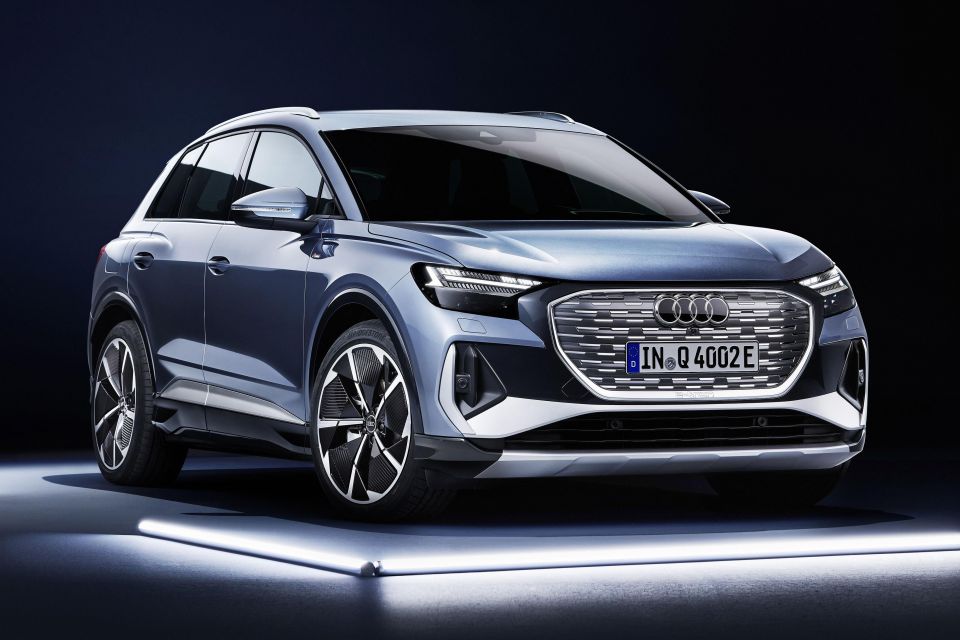
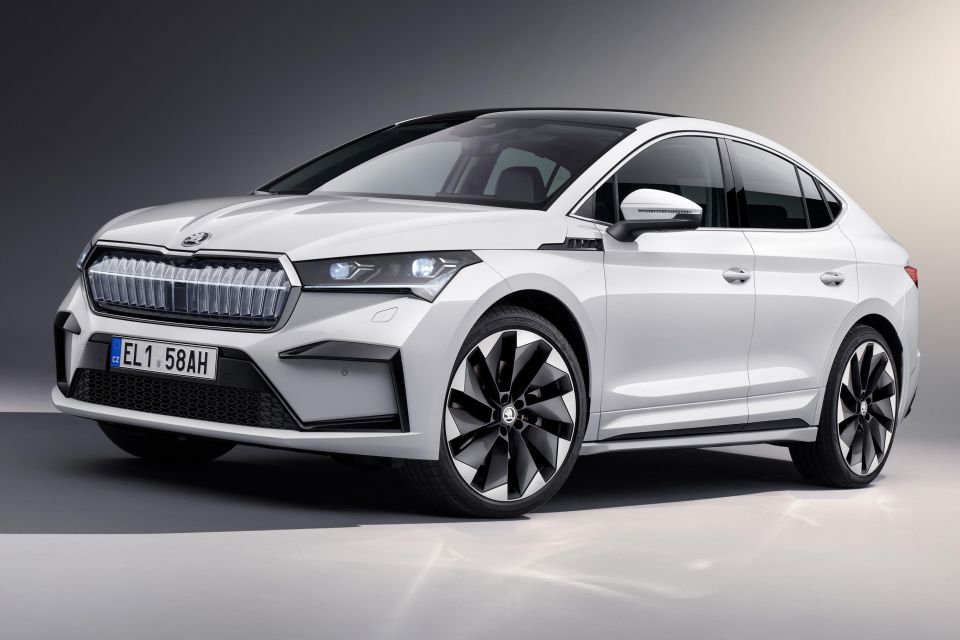
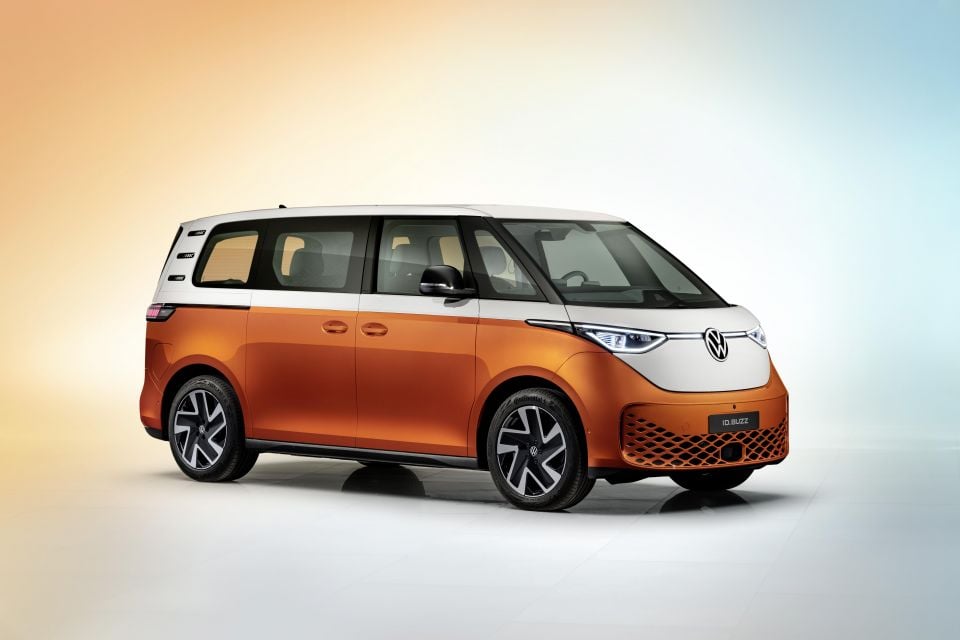
The Chinese market also exclusively receives a larger ID.6 SUV that offers seating for seven.
More recently, VW has revealed the ID. Buzz and ID. Buzz Cargo, with a design and paint scheme inspired by the original VW Kombi/Microbus.
Other Volkswagen Group brands are also making use of the MEB platform. This includes the Skoda Enyaq iV and Enyaq Coupé iV, set to launch here, as well as the Audi Q4 e-tron and Sportback e-tron which have yet to be confirmed for Australia.
In China, Audi also sells the Q5 e-tron, effectively a more luxurious counterpart to the ID.6 and not mechanically related to the combustion-powered Audi Q5 available locally.
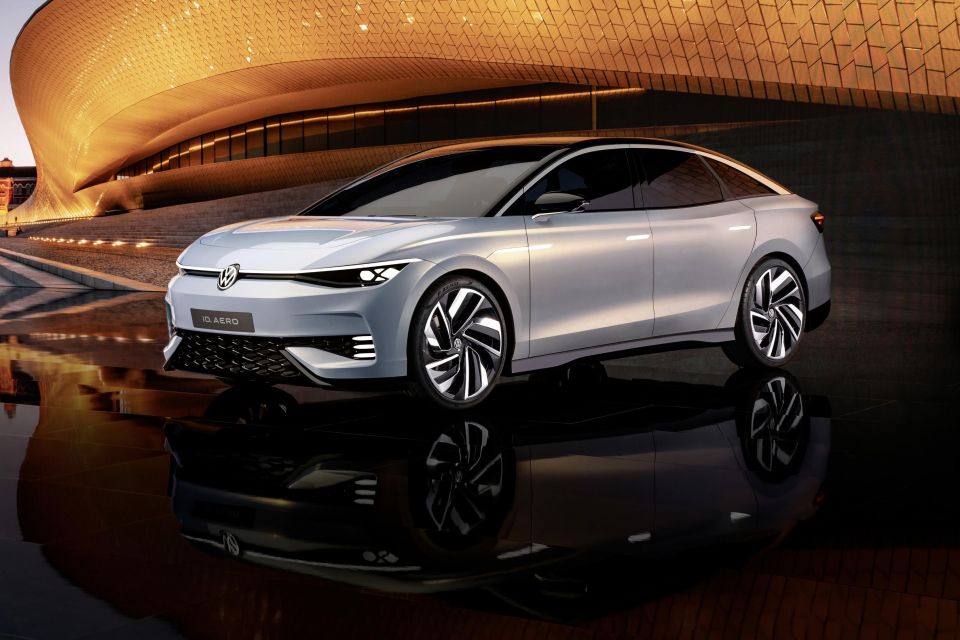
The Volkswagen Group expects that more than 10 million vehicles on the road will eventually be underpinned by the MEB platform and, as part of this, the Group plans to release several other models on the MEB architecture.
The model that is closest to launch is a production version of the VW ID. Aero concept, which will give the brand a rival to the Tesla Model 3.
A sleek fastback sedan, the Aero is expected to offer a maximum range of more than 600km from a 77kWh battery due to optimised aerodynamics, with the concept achieving a claimed drag coefficient of just 0.23.
Manufacture of the production version is expected to start in China during the second half of 2023, with European production to also commence next year.
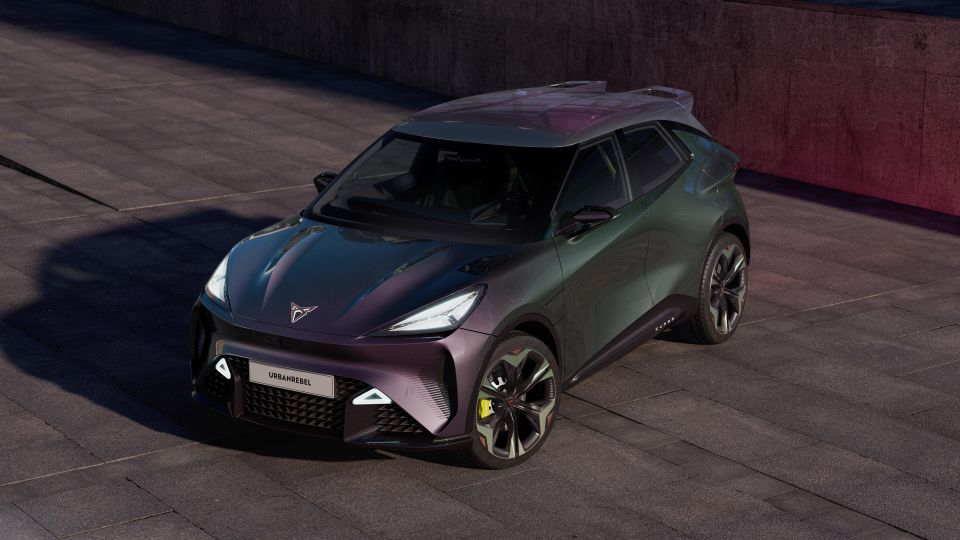
The Volkswagen Group also plans to launch a range of smaller EVs on a version of the MEB platform, with entry-level EVs confirmed for the Cupra, Skoda and Volkswagen brands.
While Skoda and Volkswagen have only released sketches of their entry-level models, Cupra has revealed two different concept versions of its upcoming model wearing the UrbanRebel nameplate.
The latest UrbanRebel concept features a single 166kW electric motor, and a battery pack of undisclosed size. The motor is mounted up the front to provide front-wheel drive, in contrast with existing MEB models.
Cupra is claiming its “range version” of the UrbanRebel will have an all-electric range of 440km.
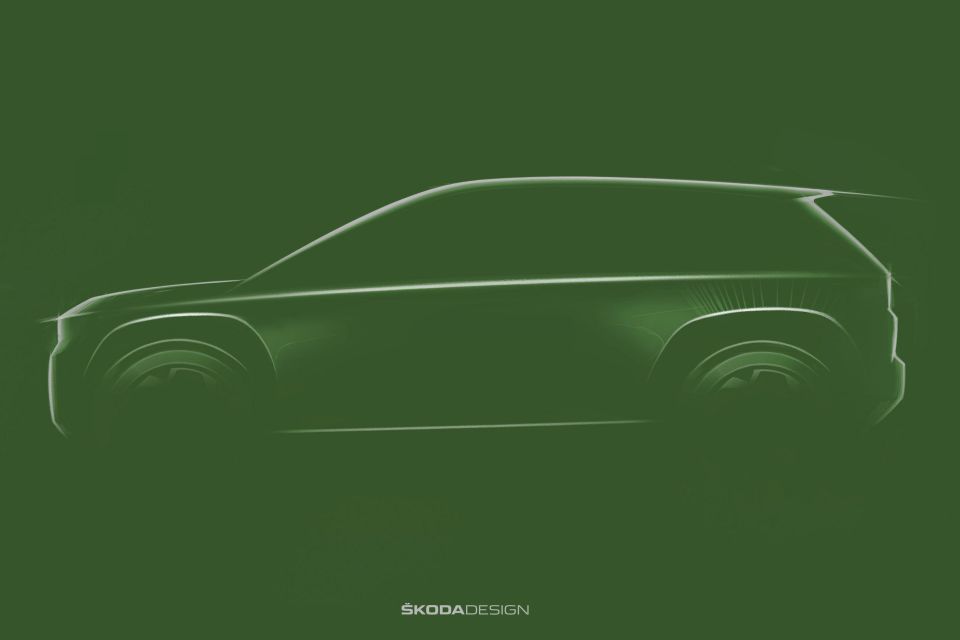
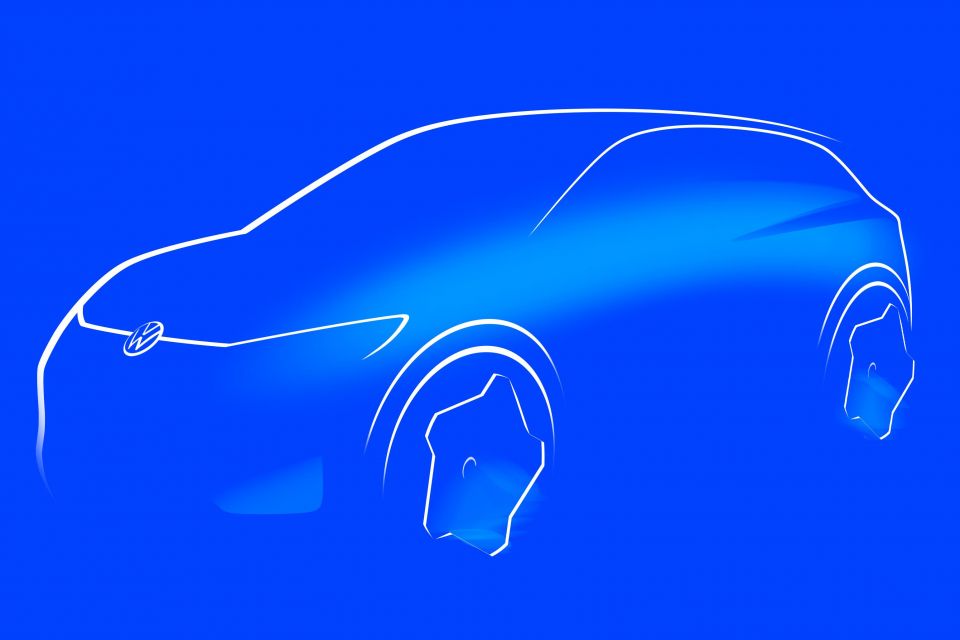
These models are intended to be more affordable than existing MEB models. Volkswagen has previously confirmed it’s targeting a starting price of around 20,000 euros ($32,000) for its entry-level EV.
The Volkswagen Group is also already planning supplemental and successor platforms to the MEB architecture.
The first cab off the rank will be the PPE (Premium Platform Electric), another platform co-developed by Audi and Porsche like the J1 platform underpinning the Audi e-tron GT and Porsche Taycan.
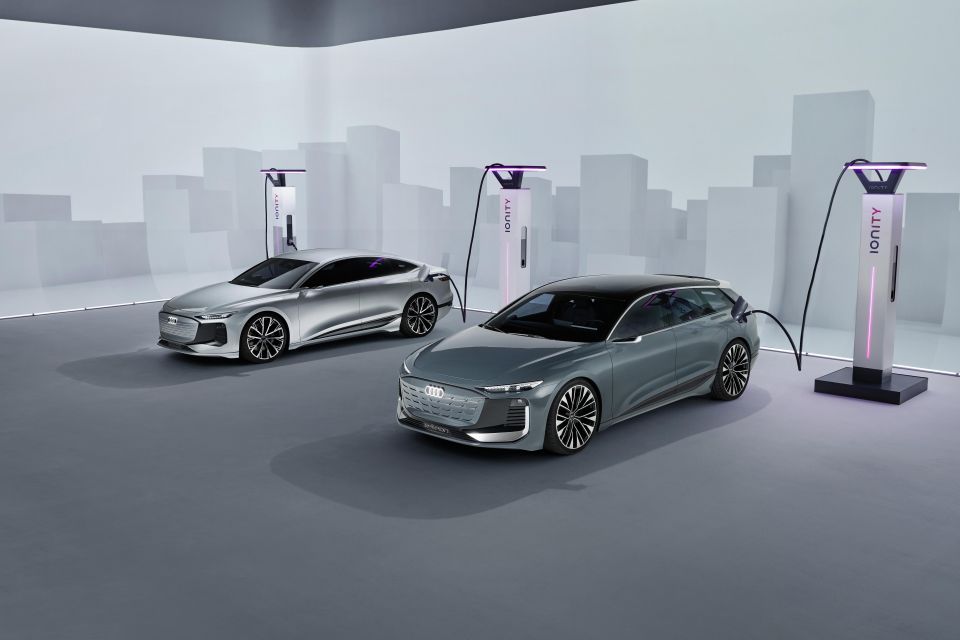
PPE will be used as a basis for larger, more luxurious models than MEB-based vehicles, such as the next-generation Porsche Macan EV and Audi Q6 e-tron, as well as the Audi A6 e-tron and A6 Avant e-tron.
In the second half of this decade, the Volkswagen Group will also introduce its next-generation EV architecture, known as the SSP (Scalable Systems Platform), which will debut on a new flagship for the Volkswagen brand that’s being referred to as the Trinity.
The SSP is expected to replace both the MEB and PPE architectures, with VW CEO Herbert Diess claiming that the platform will be suitable for light cars offering anywhere from 85kW of power to supercars with an 850kW power output.
The Volkswagen Group expects to build more than 40 million cars over the lifespan of the SSP platform.
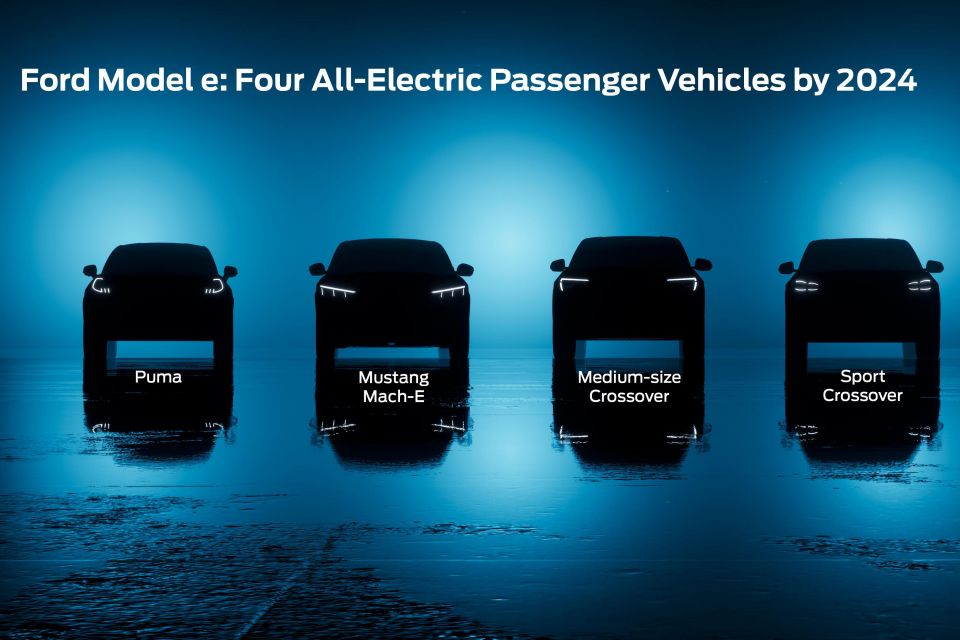
Unlike VW’s previous combustion engined platforms such as MQB, the company is open to licensing both the MEB and future SSP platform to car manufacturers outside the Volkswagen Group.
As part of a broader collaboration with Ford that also includes technologies such as autonomous driving, Volkswagen recently announced that Ford will licence the MEB platform to produce two Ford electric vehicles for the European market.
The first model is expected to be an EV crossover and, while details of the second model are uncertain, Ford expects the two models to have a combined volume of 1.2 million cars produced over a six-year timeframe from 2023.
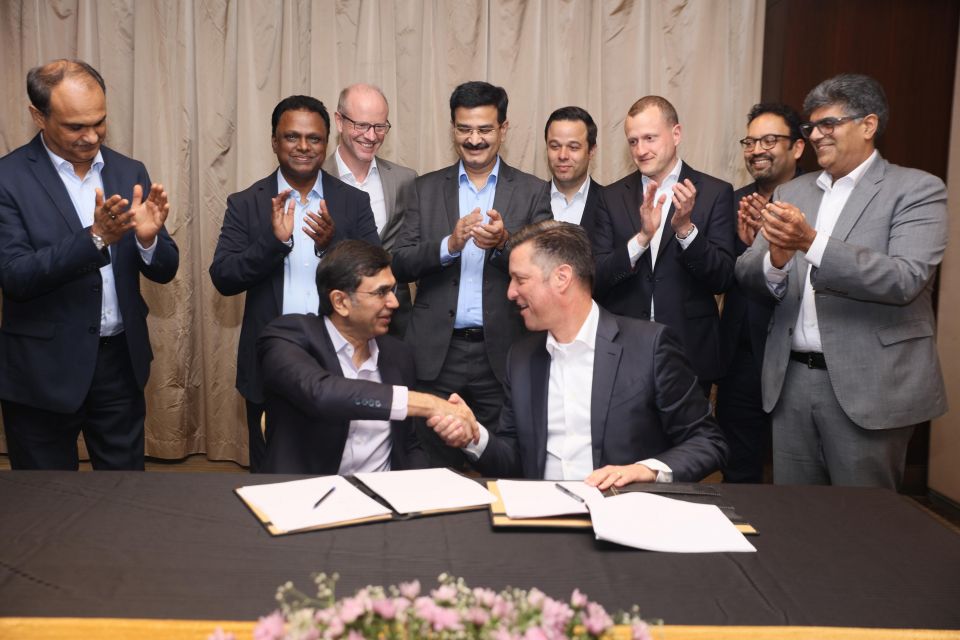
Indian manufacturer Mahindra & Mahindra has also decided to form a partnership with Volkswagen. Under this agreement, Mahindra intends to use aspects of the MEB architecture, including electric motors, battery cells and associated powertrain components, for its ‘Born Electric’ platform.
The current agreement allows for an evaluation phase for Mahindra to scope out what it can borrow from the MEB toolkit, with a binding supply agreement to be negotiated by the end of the year.
Where expert car reviews meet expert car buying – CarExpert gives you trusted advice, personalised service and real savings on your next new car.


Damion Smy
6 Hours Ago
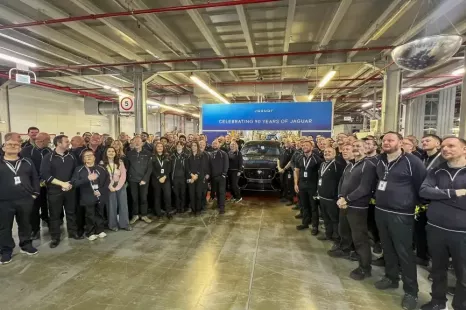

Damion Smy
10 Hours Ago
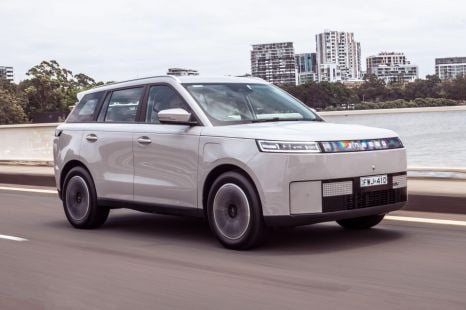

Josh Nevett
12 Hours Ago
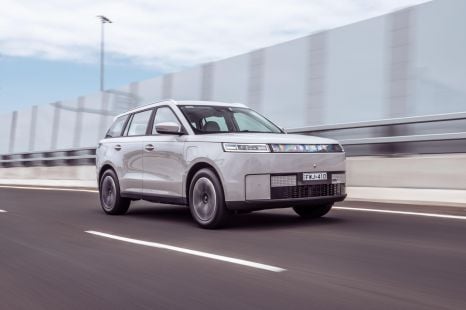

Josh Nevett
12 Hours Ago
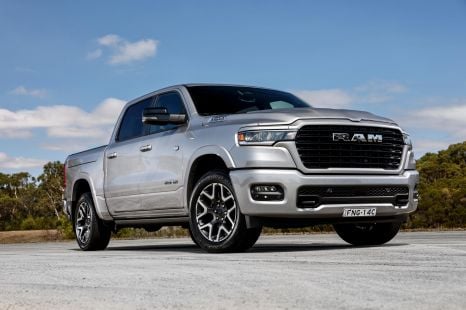

Damion Smy
12 Hours Ago
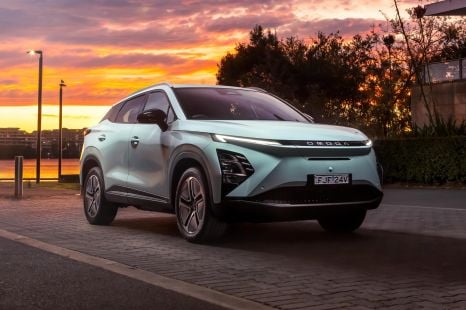

CarExpert.com.au
13 Hours Ago